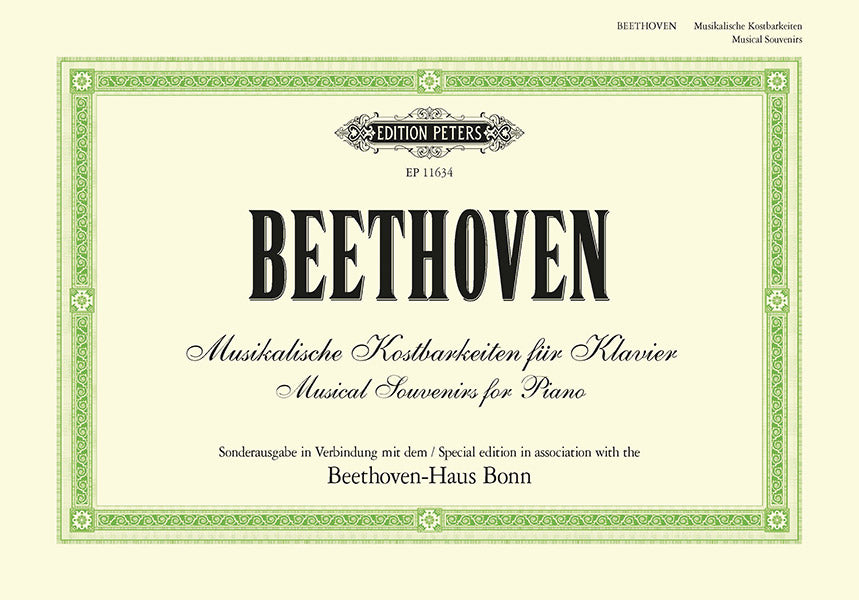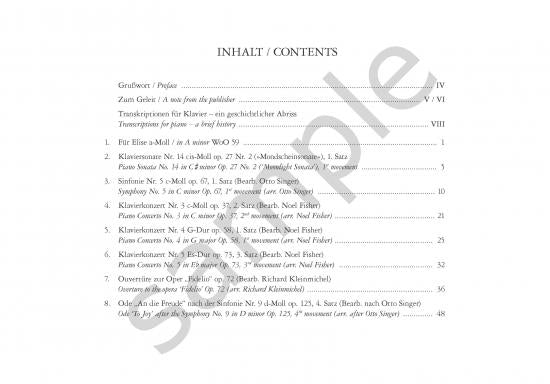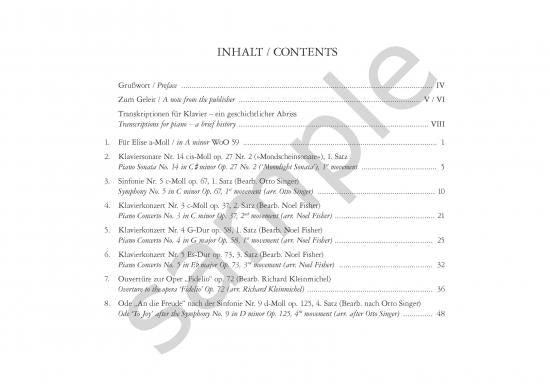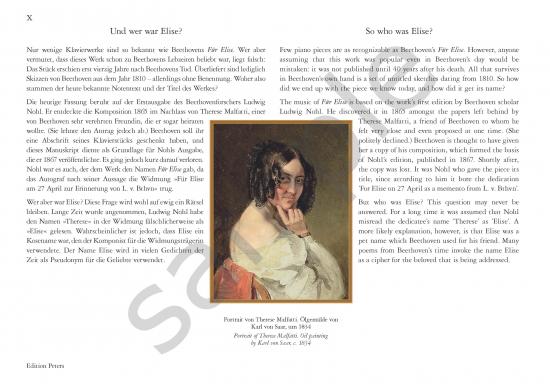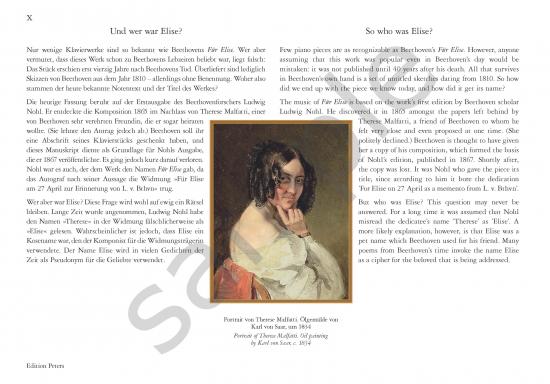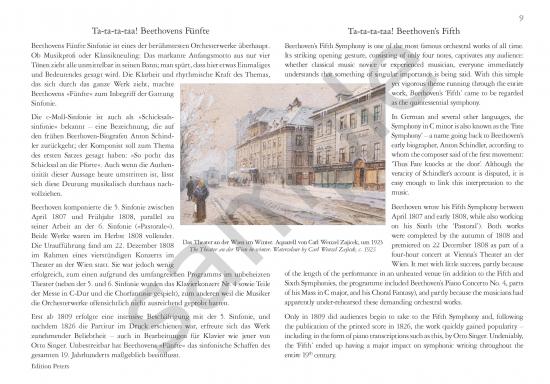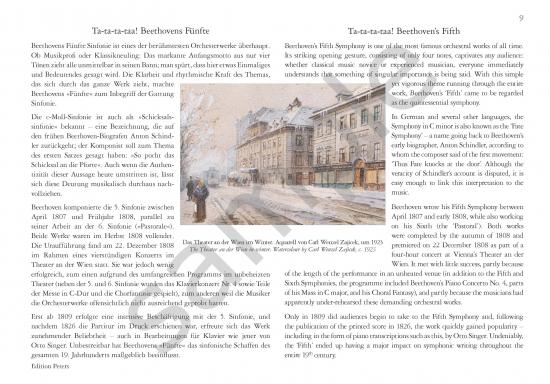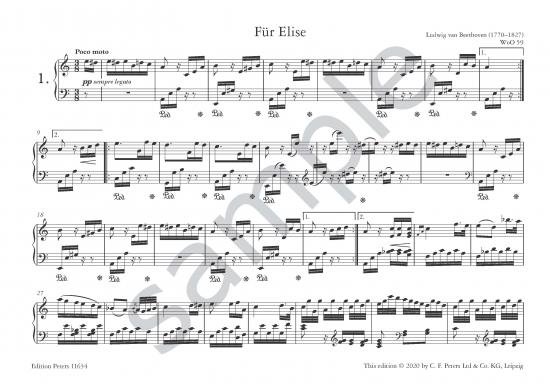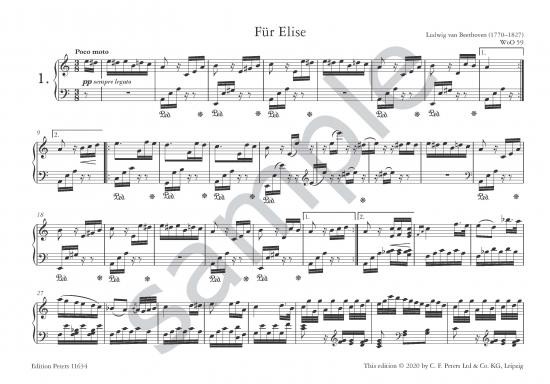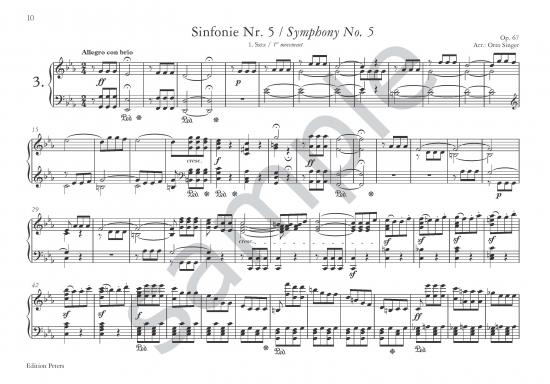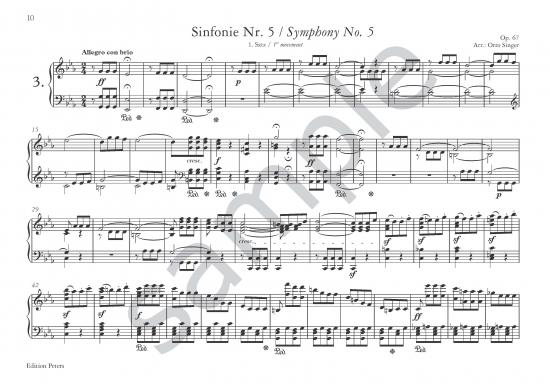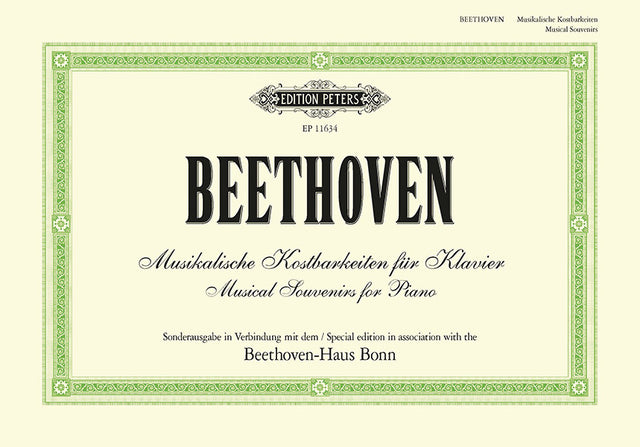Ludwig van Beethoven
Beethoven: Musical Souvenirs for Piano - Original Works and Arrangements
- Composer: Ludwig van Beethoven (1770-1827)
- Arrangers: Otto Singer, Noel Fisher, Richard Kleinmichel
- Instrumentation (this edition): Piano
- Originally for: Piano, Orchestra, Opera
- ISMN:
- Size: 10.8 x 7.5 inches
- Pages: 60
Description
Specially produced in association with the Beethoven-Haus Bonn for the 250th Anniversary of Ludwig van Beethoven's birth, this souvenir collection of some of his most famous pieces and movements allows us to rediscover the joy of experiencing the full range of his music in the home and through our fingers, just as millions of amateur musicians got to know and love this music in the days before recordings. The volume contains original works for piano, such as the ever-popular Für Elise , and expert arrangements of orchestral movements, such as the first movement of the Fifth Symphony and the Ode to Joy from the Ninth Symphony.
Beautifully illustrated, and with introductions to all pieces, this handsome book comes in a practical landscape format. Edition Peters enjoyed a close working relationship with Beethoven, as the original publisher of his First Symphony among other works. The book also tells the fascinating story of the connection between Edition Peters and the most famous portrait of Beethoven by Joseph Karl Stieler.
Works:
- Für Elise (Bagatelle in A Minor), WoO 59
- 1st movement from Piano Sonata No. 14 in C-sharp Minor ("Moonlight"), Op. 27, No. 2
- 1st movement from Symphony No. 5 in C Minor, Op. 67
- 2nd movement from Piano Concerto No. 3 in C Minor, Op. 37
- 1st movement from Piano Concerto No. 4 in G Major, Op. 58
- 3rd movement from Piano Concerto No. 5 in E-flat Major ("Emperor"), Op. 73
- Overture from Fidelio, Op. 72
- "Ode to Joy" from Symphony No. 9 in D Minor ("Choral"), Op. 125
Publishers use a lot of words to describe what they sell, and we know it can be confusing. We've tried to be as clear as possible to make sure you get exactly what you are looking for. Below are descriptions of the terms that we use to describe the various formats that music often comes in.
Choral Score
A score for vocalists that only contains the vocal lines. The instrumental parts are not there for reference. Generally, cheaper than a vocal score and requires multiple copies for purchase.
Facsimile
Reproductions of the original hand-written scores from the composer.
Full Score
For ensemble music, this indicates that the edition contains all parts on a single system (there are not separate parts for each player). In larger ensembles, this is for the conductor.
Hardcover
Hardbound. Generally either linen-covered or half-leather.
Orchestral Parts
Similar to a wind set, this is a collection of parts. In the case of strings, the numbers listed are the number of copies included, though generally these are available individually (often with minimum quantities required).
Paperback
When publishers offer multiple bindings (e.g. hardcover) or study scores, this is the "standard" version. If you're planning to play the music, this is probably what you want.
Performance / Playing Score
A score of the music containing all parts on one system, intended for players to share. There are not separate parts for each player.
Set of Parts
For ensemble music, this indicates that there are separate individual parts for each player.
Solo Part with Piano Reduction
For solo pieces with orchestra, this is a version that contains a piano reduction of the orchestra parts. For piano pieces, two copies are typically needed for performance.
Study Score
A small (think choral size) copy of the complete score meant for studying, and not playing. They make great add-ons when learning concertos and small chamber works.
Vocal Score
A score prepared for vocalists that includes the piano/organ part or a reduction of the instrumental parts.
Wind Set
For orchestral music, this is a collection of wind and percussion parts. The specific quantities of each instrument are notated.
With Audio
In addition to the printed music, the edition contains recordings of the pieces. This may be an included CD, or access to files on the internet.
With / Without Fingering (Markings)
Some publishers prepare two copies - a pure Urtext edition that includes no fingering (or bowing) suggestions and a lightly edited version that includes a minimal number of editorial markings.

